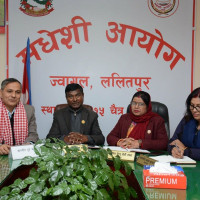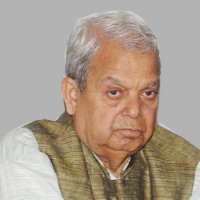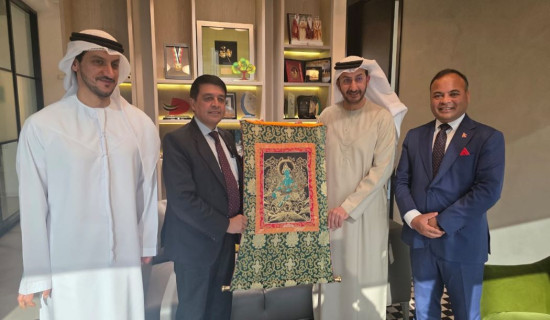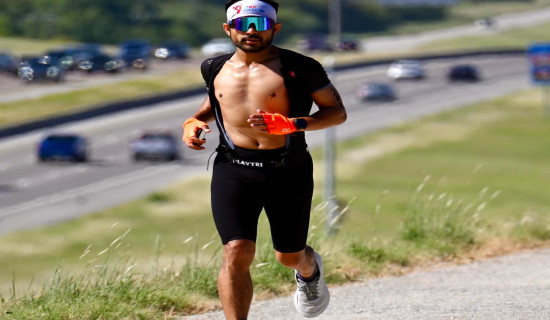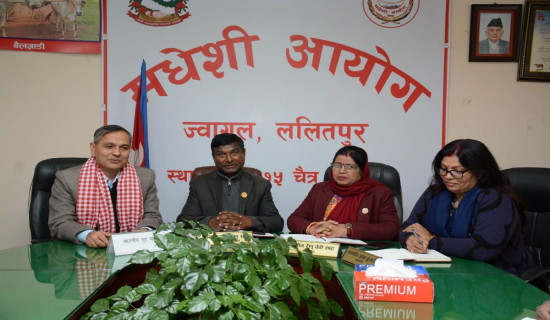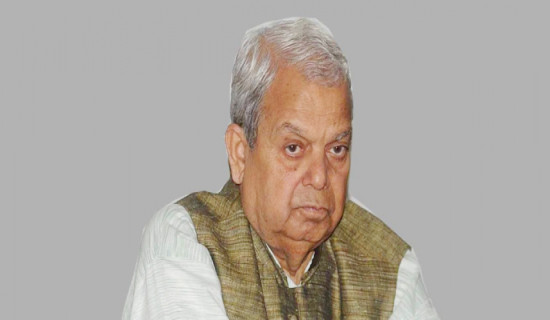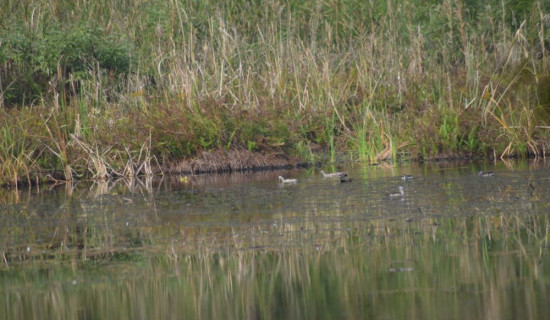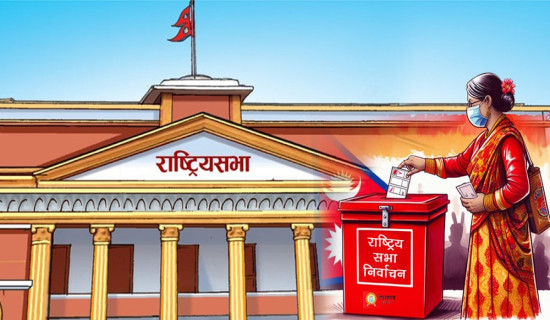- Wednesday, 7 January 2026
Lakhe enthroned as prelude to Indra Jatra
BY SUSHMA MAHARJAN, Kathmandu, Aug 24:One of the biggest jatras of Nepal, Indra Jatra known as Yenya in local language, is on its way. This year it falls on Bhadra Sukla Chadurdshi (September 9). There are different elements of this jatra. One interesting, thrilling and important element is Majipa Lakhe.
Majipa Lakhe with a ferocious face, protruding fangs and unkempt red hair is also known as Peaceful Bhairav/Royal Lakhe. It is taken as the protector of children and worshipped for its divine power in the Newar community.
On Tuesday, Majipa Lakhe was placed on its throne for the upcoming eight-day-long Indra Jatra at Majipat in Kathmandu. The Lakhe mask is kept inside ‘Pilla’ (a metal box for safekeeping the mask) throughout the year and taken out on Bhadra Krishna Ekadasi and placed in the throne every year, informed Rajib Ranjit, principal leader of the Indrajatra Shree Lakhe Aaju Guthi.
After placing it in the throne, ‘Naasa Nikyagu Puja’ (a religious ritual to take out the powers of the deity) was performed by the Guthiyars of Indrajatra Shree Lakhe Aaju Guthi on Tuesday.
This ritual is important since the mask will be sent for repaint on the next day.
While painting, in order to prevent the painter from any untoward incident, the Lakhe mask is stripped of its power.
The repainted mask will be stored with power on September 5 (Bhadra Shukla Dashami) this year performing a ritual called ‘Naasa Teygu Puja’ (a religious ritual to restore the powers of the deity).
On the next day, the massive red hair will be attached to the mask performing a secret ritual. Public are not allowed to observe this ritual.
Majipa Lakhe will come out on September 6 (Bhadra Shukla Ekadashi) from Lakhe Cheen this year. It will be dancing and running through the core city areas and the route where the chariot of Kumari is pulled.
Ranjit informed that the mask of the only Lakhe that comes out once in a year to perform in Indra Jatra can be worn only by males from the Newar community.
He himself was only 16 when he first started dancing as one of the faces behind the Lakhe. There can be four to five people taking turn behind the mask in a day.
He said that earlier only Ranjitkars were allowed to wear the mask. But, now anyone capable of wearing the Lakhe mask, hair, costume and jewelry which can weigh up to 50 kilograms are allowed to perform.
Unlike the other traditional dances, the dancers are not trained for the Lakhe dance.




